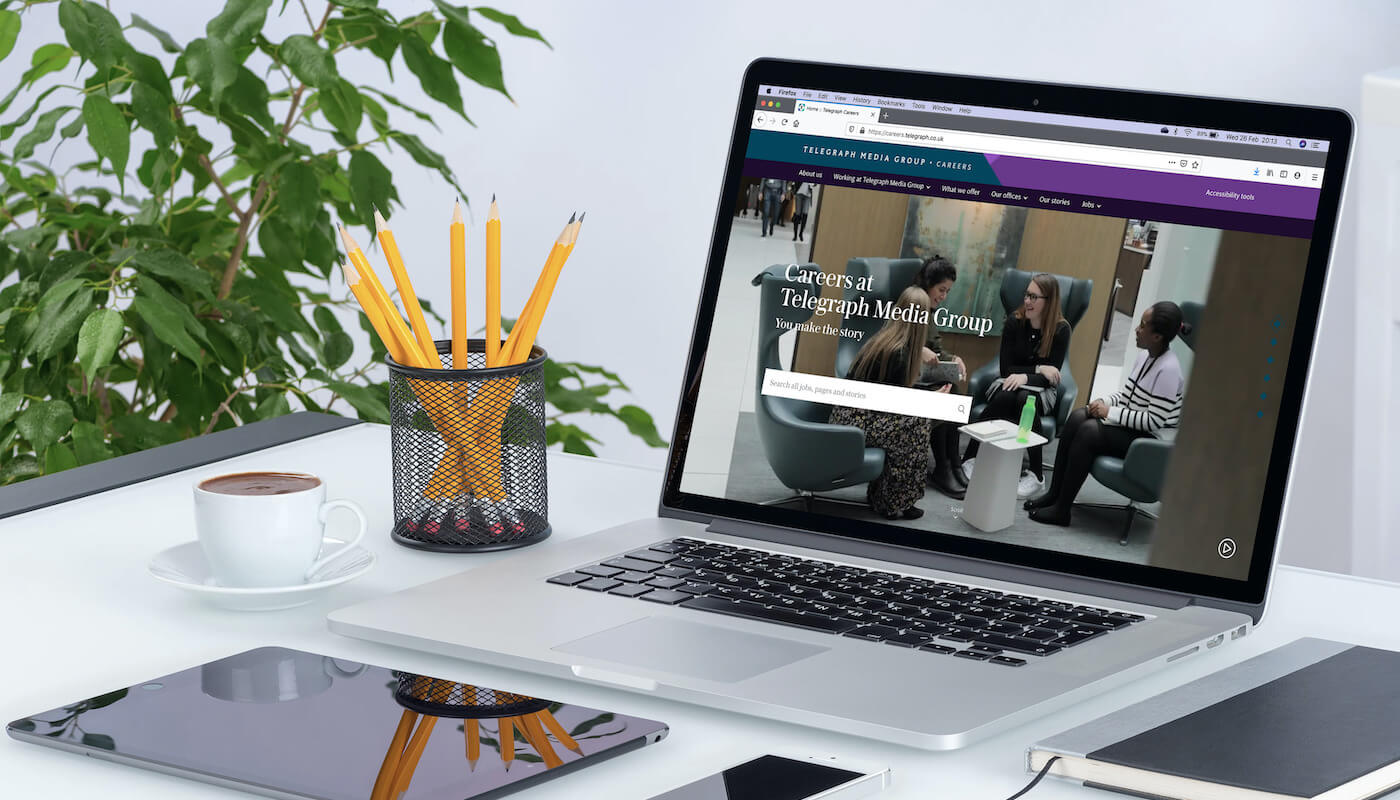I am doing a few webinars over the next few weeks and one that I’ve been asked to do a number of times is around the subject of careers websites. But what makes a good careers website? There has also been a few interesting discussion threads on some of the groups and forums around what a careers website’s primary function should be – information, conversion or just looking cool.
Whatever it is your careers website has to deliver a lot. It’s often a candidate’s first contact with your employer brand and acts as a portal into your live vacancies. But candidates aren’t only interested finding a job, they want an insight into what it is actually like to work for you. If they can’t get that from your careers website, they’ll go elsewhere.
No pressure then. You need a careers website that delivers an engaging candidate experience and gets them over the line with an application, so what makes a really good one? As I mentioned above opinion doies vary. But really it’s a mixture of everything – a great process, compelling content and making an emotional connection. So I thought I’d walk you through some of the features we’ve built into some of our recent sites. We’ll even offer a critique of your current site – more of that later.
Make sure it can be found
You want your careers website to be found and 85% of job searches start from a search engine. How the site is built and structured behind-the-scenes can have a big impact on your position in the search engine results. Google like sites that offer a good user experience. The better (and faster) that is, the higher the search result rankings. Cumbersome coding or too many large images that make it slow to load may drive visitors away and negatively impact site ranking. Your site should be designed to be highly visible to the search engines with all pages developed to be successfully indexed. And that includes the jobs pages which should be programmed specifically to be indexed by ‘Google for Jobs’.
To index your careers site, your site map needs to be submitted via Google Search Console. We’ve gone in to a lot more detail about indexing and SEO in our article ‘Making sure Google can find your careers website and vacancies.’
While on the topic of visibility, it’s always a bugbear of ours when we see a careers site that’s hard to find on an organisation’s main site. Many candidates will first arrive at your corporate site so don’t make it hard to find the careers pages by hiding the link at the bottom of the page. Clear navigation to your careers page from the main corporate site helps attract candidates. Obvious really.
Make it uniquely yours
Your people are often your very best advocates, and they’ll be who your candidates will want to hear from and believe. They can help deliver key content and offer a real insight into the culture. That’s why they should be placed at the centre of every aspect of your careers site and feature on every page, blog or job and in every piece of video.
To deliver an authentic look and feel, an investment in bespoke photography can really bring a site to life. All our sites feature real employees – the days of stock photography ‘people shots’ are long gone. Our careers website for Derbyshire Constabulary features the work of photographer Peter Corcoran (www.petercorcoran.com) and we think they perfectly show their people taking pride in their work. We’ve used the same approach for Toolstation where using their own people not only adds warmth and humour to the site, it was really popular internally and ensured a lot of buy-in for the site.
Make sure users can find what they’re looking for
On average, 80% of visitors come to a careers website to search for jobs. So, why not make it easy for them with the search function front and centre? That’s what we did for Derbyshire Constabulary and Phoenix Group. This ensures that the right people quickly find the right jobs.
For The Telegraph we introduced a search bar to the homepage that not only searches the live jobs on the website, but also directs the user towards pages and blog articles that it thinks will also be of interest to them. Since adding this feature we have seen a significant increase in traffic towards content pages and blog articles from the homepage.
Capture candidates at the point where they’re ready to apply
Google gives preference in searches to sites that are mobile compatible. It’s also a lot easier for your candidates to engage with and find what they want. If your careers site isn’t mobile friendly, you’ll be losing candidates full stop. If you have an existing site that isn’t mobile friendly, a new careers site is the time to change things. Here’s something we wrote on mobile applications – it’ll give you some pointers.
Here’s a practical example. We know that 49% of visits to the Phoenix Group careers website are on a mobile device, so we worked closely with their ATS supplier, Sage People, to offer visitors the opportunity to apply via their smartphone. And for those who don’t want to, they can bookmark the vacancy that interests them and apply later via a desktop.
Embrace new technology (where appropriate)
For the Manchester Metropolitan University we worked with eArcu who developed a chatbot to help potential candidates with their questions around the University, the roles available, Manchester itself and any hints, tips or advice on making an application. It offers job seekers another way of interacting with the Manchester Metropolitan University recruitment team and has been phenomenally popular.
Understand what accessibility really means
It isn’t all about devices and screen readers. Accessibility is about ensuring that everyone can understand your website. The Telegraph careers website makes use of ReciteMe, a Cloud-based web accessibility solution which allows the website user to customise their website in a way that works best for them. This innovative tool makes the website not only accessible but useable by all. The Telegraph believe that everyone should have the opportunity to be able to access their jobs and the ‘Accessibility toolbar’ supports job seekers who are neurodiverse, visually impaired or speak English as a second language.
Make the candidate experience as seamless as possible
We know and have worked with many of the popular Applicant Tracking Systems (ATS) suppliers – such as Oleeo, Workable, Sage, ePloy, SAP, Lumesse and Workday – and we’ve even helped clients choose the right one for their needs. Most organisations have them so, we think it’s a good idea to integrate them into careers sites.
Integration often means you can control the formatting of the job details, pull relevant jobs into relevant sections of your website and ensure that the jobs can be better indexed by Google, Indeed and the other search engines. It helps towards a better response and it improves the candidate experience. Often candidates don’t even know they’ve left your site and gone to your ATS, integration can be that smooth.
If you are thinking about revising your ATS system, you’ll find this a good read … ‘How to plan and spec your Applicant Tracking System.’
Make your content as compelling as possible
If you’ve got the far and are thinking ‘why hasn’t he mentioned content?’ then the follow-up blog to this will reveal all. Yes, of course content matters – from the opening strong headline to the information about the organisation, culture and, increasingly, the use of video. And a well written job advert helps too. There’s a lot to cover – that’s why we thought we’d give it the attention it needs in an article all of its own.
How do you think you shape up?
We’ve covered all the main points that make up a good careers website. We hope that’s been helpful – but what about yours? To help you gauge whether your careers website matches up to the expectations of the modern job seeker we have developed the Careers Website Audit. The audit will benchmark your careers website against best practice in site design, structure, functionality, content and candidate experience.
To get a free copy of your Careers Website Audit, simply click on the link below and complete the request form. We’ll review your website against our key criteria and within 24-48 hours we’ll pass you back our findings. We think that you’ll find the results of the audit really very interesting.
Request your free-of-charge careers website audit

